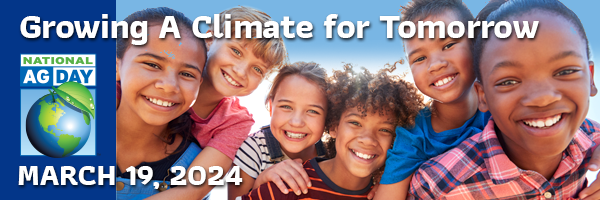Kelsey
Faivre was raised on a farm in northern Illinois, where she learned to love
agriculture. She is a senior studying agriculture communications at Iowa State
University in Ames, and she is an administrative assistant at CAST. She has
written for several ag-related publications. This editorial appeared first in Feedstuffs Foodlink on February 8, 2016.
Are You an Advocate for Agriculture?
Earlier this year, I was asked an interesting question as part of an interview.
“Do you consider yourself to be an advocate for agriculture?”
My initial thought was that I didn’t want to be called an advocate. Not because I didn’t feel qualified--I was an agriculture literacy intern--or because I hadn’t made any efforts, but because I wanted to do more than advocate.
Advocating and Cheerleading
Sometimes, it seems like advocating is like being a cheerleader for your team. But cheerleading isn’t a conversation. It doesn’t allow for give and take. Simply advocating can be limiting.
I was thinking about a science
communication class I took at Iowa State. We had discussed in depth the three
roles scientists can take when they communicate with the general public:
advocate, arbiter, and adviser. The difference between these roles lies with
the intent of the communicating scientist—the expert.
An advocate intends to sway and is the most biased expert.
The arbiter is unbiased and serves with the intent of simply responding to
questions as an expert. The adviser points out all available options and tends
to advise on the best scientific answer. In this way, the adviser role is a
blend of that of the advocate and the arbiter.
The advocate role is the most difficult for a scientist to maintain, because nothing in science is certain. To go all out in support of a policy or scientific movement only to find contradicting evidence may create polarization instead of open communication, and tends to damage the credibility of the scientist.
Being an advocate, or cheerleader, for agriculture tends to mean designating teams and picking sides instead of leaving room for more than one way of farming and an open, honest conversation. By simply cheerleading and therefore avoiding conversations about topics of doubt and uncertainty in agriculture, we lose the important element of transparency.
At its core, the goal of scientific advocacy is to reduce the scope of available choice: in the case of agriculture this means choice of production methods and choices of food in the grocery store. I firmly believe we need to showcase the available choices and create an environment where consumers can join the conversation.
Put simply, being a cheerleader for agriculture can create distrust and be damaging to credibility. Cheerleaders don’t listen; they just keep cheering. That’s fine at a football game, but when it comes to agriculture, people can see through this one-sided championing and wonder what we’re hiding.
The advocate role is the most difficult for a scientist to maintain, because nothing in science is certain. To go all out in support of a policy or scientific movement only to find contradicting evidence may create polarization instead of open communication, and tends to damage the credibility of the scientist.
Being an advocate, or cheerleader, for agriculture tends to mean designating teams and picking sides instead of leaving room for more than one way of farming and an open, honest conversation. By simply cheerleading and therefore avoiding conversations about topics of doubt and uncertainty in agriculture, we lose the important element of transparency.
At its core, the goal of scientific advocacy is to reduce the scope of available choice: in the case of agriculture this means choice of production methods and choices of food in the grocery store. I firmly believe we need to showcase the available choices and create an environment where consumers can join the conversation.
Put simply, being a cheerleader for agriculture can create distrust and be damaging to credibility. Cheerleaders don’t listen; they just keep cheering. That’s fine at a football game, but when it comes to agriculture, people can see through this one-sided championing and wonder what we’re hiding.
It Is Time to Move Beyond
I believe it is time to move beyond advocacy to ensure we are celebrating the strengths of our industry as well as listening, learning, and responding to the concerns of the public.
If I was asked that question again, I would say yes, I’m an advocate—but I want to be more than that.
I want to be a source of high quality, trustworthy information. I want to be positive while being able to see my industry with a critical eye. I want to be forward thinking, willing to adapt and change with the concerns and demands of the public without sacrificing best practices based on science. I want to be one of many informed participants in a conversation about food that is more than just a polarized argument.
by Kelsey Faivre (pic of sign from miller-mccune.jpg)
I believe it is time to move beyond advocacy to ensure we are celebrating the strengths of our industry as well as listening, learning, and responding to the concerns of the public.
If I was asked that question again, I would say yes, I’m an advocate—but I want to be more than that.
I want to be a source of high quality, trustworthy information. I want to be positive while being able to see my industry with a critical eye. I want to be forward thinking, willing to adapt and change with the concerns and demands of the public without sacrificing best practices based on science. I want to be one of many informed participants in a conversation about food that is more than just a polarized argument.
by Kelsey Faivre (pic of sign from miller-mccune.jpg)





